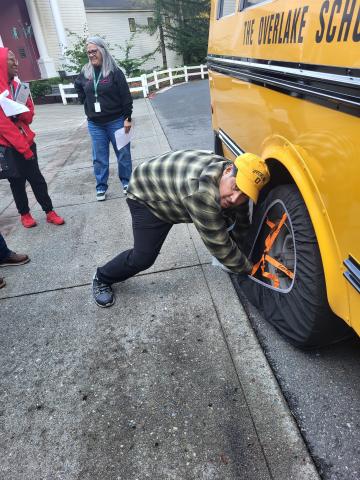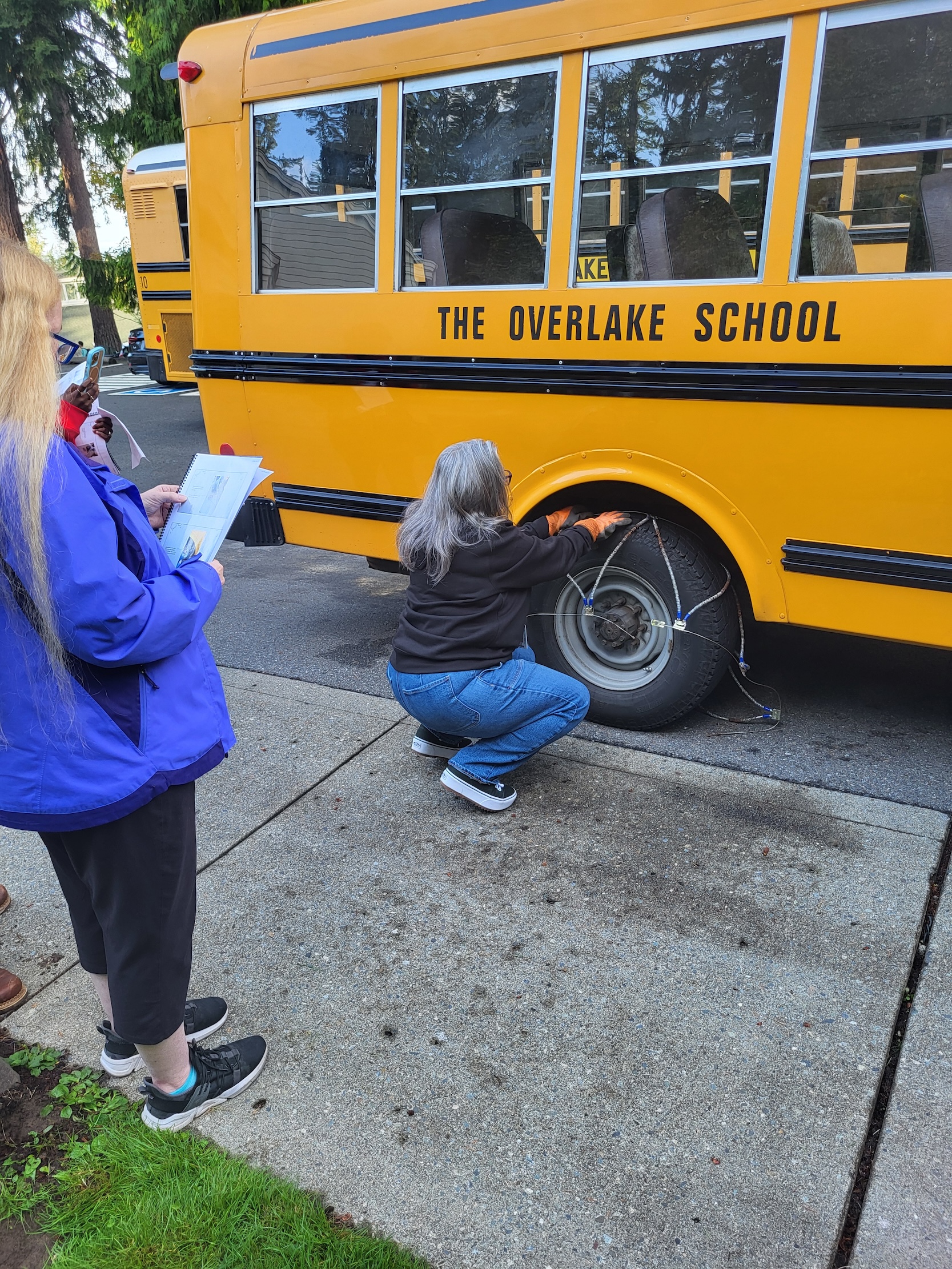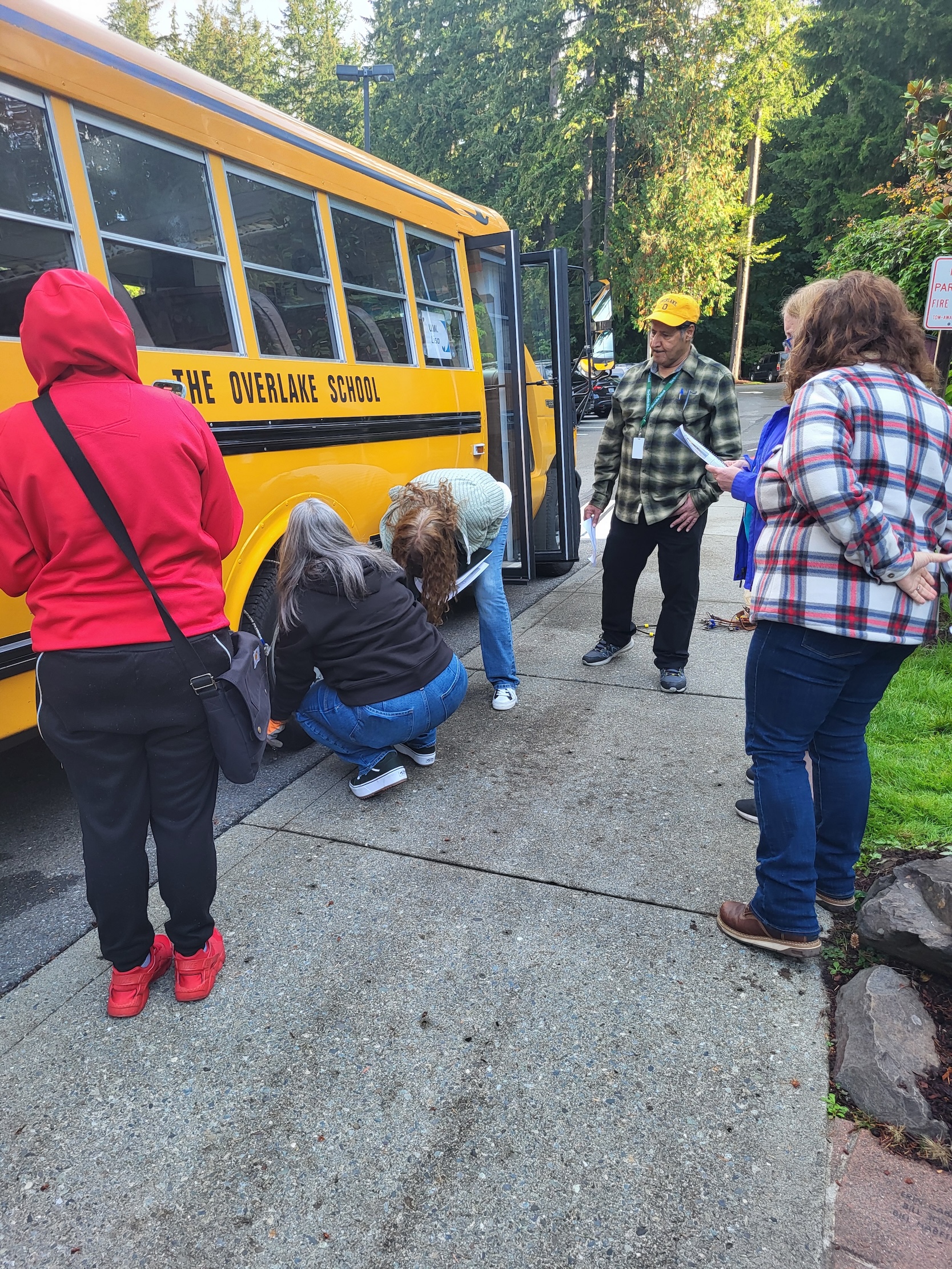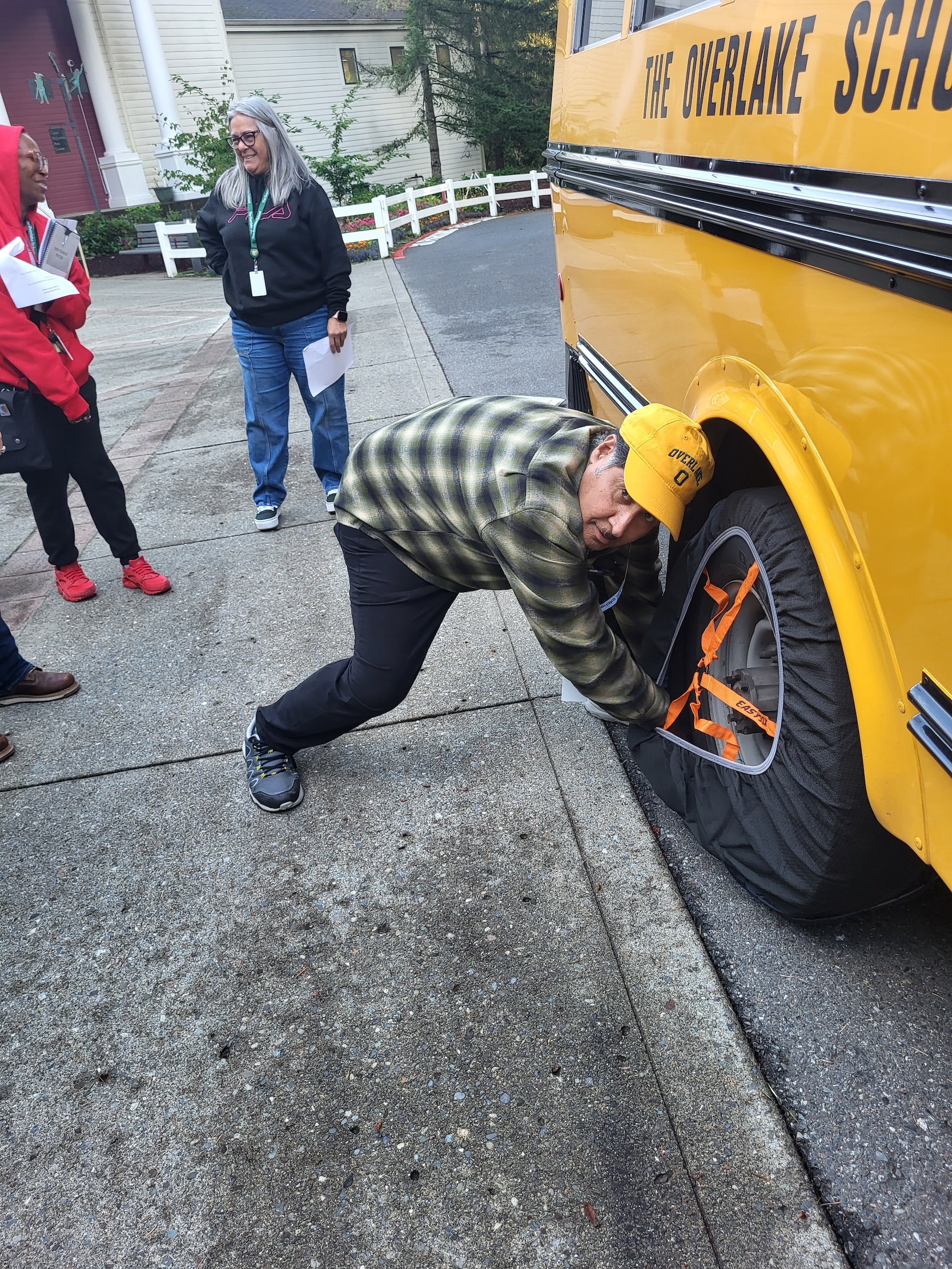Preparing for winter weather travel

Did you know that over a third of our students take the Overlake buses every day to and from school? And, during the year between athletics, retreats, Project Week, and field trips, nearly all students will ride on an Overlake bus. Hauling precious cargo like that, no wonder safety is paramount with the Transportation team!
So in preparation for the winter season and potentially slick roadways, the transportation team has been going through in-depth training on how to prepare the buses and how to drive when the weather turns bad.
Overlake buses remain in compliance with Federal Motor Carrier Regulations and the WA. Dept. of Transportation Regulations which requires cables (aka “chains”) from November 1st thru March 31st. During this time all Overlake vehicles (buses and SUV’s) are equipped with cables, buckets of salt, and shovels.
All vehicles are also equipped with Snow Socks, a relatively new type of traction device which our Director of Transportation, Bill Neil says is a game changer when providing extra traction for the vehicles. "The snow socks are literally like a sock that is very easy to put on over the tires to provide traction."
In addition, Overlake's big route buses are equipped with permanent chains. "These drop chains are attached to the rear suspension of the vehicle and can be activated by the driver using a dashboard switch," explains Neil. "When activated, the chains are lowered and come into contact with the tire sidewall, using centrifugal force to rotate and provide traction. This system allows buses to navigate safely in slippery and snowy conditions."
Neil says the school's bus drivers are trained on how to properly install the cables and snow socks, as well as how to properly apply salt to the tires to ensure maximum traction.
As Neil and his team prepare for the winter season ahead, the team also participates in video training sessions. "Our drivers review the proper techniques for driving in snow and on icy roads. This is important so that the drivers know what could occur and how to best be prepared for what Mother Nature throws at us."






